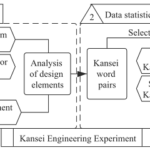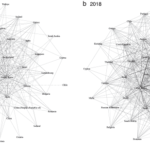Are you intrigued by the term ‘cobots’ or ‘collaborative robots’ and want to delve deeper into this transformative technology? If you’re seeking answers about what ‘cobots’ are and how they are reshaping the industry, you’ve come to the right place.
Manufacturing in the era of Industry 4.0 and Industry 5.0 (Duarte et al., 2022) demands swift and proactive responses to the ever-changing consumer demands (El Zaatari et al., 2019). In this context, automation emerges as the primary alternative, with a large number of industrial robots being designed and deployed to replace humans in various repetitive and hazardous manufacturing tasks (Hentout et al., 2019).
However, automation lacks the flexibility to address issues that may arise during the manufacturing process. This has given rise to a new type of industrial robot system, collaborative robots or cobots, where humans and robots are capable of working together side by side (Hentout et al., 2019).
Human-Robot Collaboration (HRC), a promising robotics discipline that focuses on enabling robots and humans to work together to complete collaborative tasks (El Zaatari et al., 2019), appears to be the answer to the limitations of automation.
Collaborative interaction between humans and machines will progressively intensify in industrial applications (Adriaensen et al., 2022), which has led to growing interest in cobots due to their integrated safety features and ease of programming, allowing for close collaboration and support between humans and robots.
In this article, you will dive into the fascinating world of cobots, or collaborative robots, exploring their definitions, examples, and their role in industrial automation. Whether you’re just beginning to explore this concept or seeking detailed information, this article will provide you with everything you need to know.
What are Cobots?
To fully grasp the concept of cobots, it is essential to begin by defining them and understanding why they are causing such a stir in the field of industrial automation.
Cobots, or collaborative robots, are a special category of robotic systems designed to work alongside humans in a shared space. Unlike traditional industrial robots, which often operate in isolation, cobots are designed to collaborate with human workers, enhancing efficiency and safety in the workplace.
ISO/TC 299 standard defines a cobot as a robot designed to interact directly with humans in a defined collaborative space.
In this regard, El Zaatari et al., (2019) define cobots as any robot that operates alongside humans without the presence of a barrier. Unlike robots designed for automation and unsafe work, collaborative robots are designed to work, interact, and collaborate with humans (Weiss et al., 2021) in workplaces (Lambrechts et al., 2021), thus creating a common workspace.

The Importance of Cobots
Collaborative robots are considered a new technology (Simões et al., 2020) and a significant component of Industry 4.0 and smart manufacturing due to their ability to interact with operators in a shared space (Cohen et al., 2022).
Cobots are widely employed in various industries such as life sciences, automotive, manufacturing, electronics, aerospace, packaging, plastics, and healthcare (Javaid et al., 2022), and the adoption of collaborative robots provides an opportunity for information and task exchange between robots and humans (Duarte et al., 2022).
Faccio et al., (2023) report that the direct interaction between humans and robots can be both the greatest advantage and the greatest limitation of collaborative systems, depending on how it affects human factors such as ergonomics and mental stress.
Furthermore, Castillo et al., (2021) reports that the use of cobots offers the following benefits for companies implementing collaborative robotic systems:
- Increased productivity.
- Improved quality.
- Reduction in labor costs.
- Elimination of hazardous operations.
- Increased production flexibility
Benefits of Cobots
Understanding the advantages of incorporating cobots into your manufacturing processes is essential. Increasing production profitability is the primary goal of any company. In this context, Lefranc et al., (2022) describes the following advantages of using cobots:
- Cobots have an interactive interface, making them easy to use. This allows human workers to focus on more specialized tasks.
- Cobots are permanently connected to the Industrial Internet of Things, if needed, and to their specific task system.
- The use of cobots in the industry can lead to an increase in productivity of up to 50%, without affecting human labor.
- Cobots can collect data and transmit it to other systems.
In this regard, Galin et al., (2020) describe that the prospects of integrated robotic solutions in smart manufacturing contribute to an increase in automation in production with safety compliance. The portability and compactness of robots allow for process optimization and improved efficiency.
Enhanced Efficiency
Cobots optimize operations and increase productivity by working alongside human employees. Javernik et al., (2022) reports an increase in production capacity with improved cobot speed and acceleration while highlighting the importance of uniform utilization.
Workplace Safety
Safety is a fundamental concern when it comes to Cobots, as there are requirements regarding materials and design, kinetic limitations, and the implementation of sensors and algorithms to ensure a safe workspace (Castillo et al., 2021).
Cobots vs. Robots
A common question that arises when discussing cobots is how they differ from traditional robots. Let’s compare and contrast these two technologies to provide a clear understanding.
Below, I present a comparative table between cobots (collaborative robots) and traditional industrial robots:
Table 01. Comparison of Cobots and Traditional Industrial Robots.
| Aspect | Cobots (Collaborative Robots) | Traditional Robots |
|---|---|---|
| Interaction with Humans | Designed for safe and collaborative human interaction. | Operate in separate or restricted areas, limiting interaction with humans and requiring additional safety measures. |
| Programming | Easily programmable through intuitive user interfaces, typically without the need for advanced programming knowledge. | Programming usually requires technical skills and specific knowledge of robotic programming languages. |
| Safety | Incorporate sensors and detection systems to ensure worker safety in their environment. | Require safety fences, light curtains, or other devices to separate robots from humans and prevent accidents. |
| Flexibility | Highly flexible and can be quickly reprogrammed to perform different tasks and adapt to production changes. | Tend to be less flexible and require extensive setup and programming to change tasks. |
| Workspace | Share workspace with humans, saving space and allowing greater versatility in facility layout. | Require dedicated and isolated areas, which can limit efficiency and adaptability in the plant. |
| Cost | Often more affordable in terms of initial cost and total cost of ownership due to ease of implementation and reduced need for complex safety systems. | Tend to be more costly in terms of both acquisition and maintenance due to the need for advanced safety systems and specialized programming. |
| Applications | Ideal for tasks that require collaboration with humans, such as assembly, logistics, and quality inspection. | Used in applications that do not require interaction with humans, such as welding, painting, and handling hazardous materials. |
It is important to emphasize that the choice between cobots and traditional industrial robots depends on the specific needs of each company and the particular applications they wish to automate. Both technologies have their advantages and disadvantages, and the final decision will be based on factors such as safety, flexibility, cost, and the working environment.

Examples of Cobots
To better understand how cobots work in practice, we will explore specific examples of their application in various industries. In this regard, Javaid et al., (2022) report that collaborative robots represent a breakthrough for automation in new industries due to their small scale, cost-effectiveness, and flexibility.
Cobots – Universal Robots
Universal Robots is a leading company in the manufacture of cobots, and their products are revolutionizing automation worldwide. The most well-known example of collaborative robot use is found on the BMW assembly line, where cobots are employed in the production line to wrap a protective film layer around electronic components inside the car door.
Universal Robots’ ‘robotic arms’ are also used in Volkswagen’s factory, where they handle delicate spark plugs in cylinder heads, enabling an ergonomic design of the factory workplace, where employees can complete the task of repairing the spark plugs.
Kuka
Kuka offers customized automation solutions for various industrial sectors, including aerospace, food and beverages, construction, electronics, among others. Their application areas include screwing, machine loading and unloading, stamping, sanding, and more.
Yaskawa
Yaskawa develops industrial automation robotic solutions. The company distributes robotic arms, workpiece positioners, and controllers that are easy to program.
The Future of Cobots
The cobot market is constantly evolving as it is a crucial element in the development of Industry 4.0 and Industry 5.0. In this regard, it is essential to stay informed about the current state of the market and future trends.
Although the introduction of collaborative robots has been successful in many industries, the collaboration between cobots and their operators presents challenges in terms of distribution control, proper management, and potential stress on operators (Pollak et al., 2020).
In this context, Faccio et al., (2023) emphasize that the design of collaborative models should consider human factors, such as physical ergonomics and mental workload, in relation to safety, intelligence, and cobot capabilities. Additionally, Bergman et al., (2019) argue that for cobots to become reliable and successful work companions in an industrial environment, we need to develop design principles so that cobot behavior provides readable, i.e., understandable, information and generates trust.
Furthermore, it is necessary to consider the various risks associated with the implementation of collaborative robot systems. In this regard, Castillo et al., (2021) describe the following risks:
- Risk in the planning and organization by the company for the acquisition of new technology.
- Psychosocial risk in terms of the psychological, emotional, and social involvement of the team.
- Safety, hygiene, and ergonomic risks generated by the interaction of personnel with new technologies.
- Cybersecurity risks in terms of the vulnerability of company information due to data exchange and technological connectivity.
Conclusion
New principles of work consider robots as a tool that assists or collaborates with humans, thus requiring declarative approaches that enable intuition and modifiability (Schmidbauer et al., 2020). Additionally, researchers Jabrane and Bousmah (2021) report the emergence of the discipline called ‘cobotics,’ which focuses on collaborative robots and their use as technical agents.
In summary, cobots are transforming the industry by offering unprecedented flexibility, efficiency, and safety, becoming the ideal complement for workers. In this regard, if your company is engaged in product manufacturing, you should consider the possibility of incorporating collaborative robots into your processes.
Bibliographical References
Adriaensen, A., Costantino, F., Di Gravio, G., & Patriarca, R. Teaming with industrial cobots: A socio-technical perspective on safety analysis. Hum. Factors Man. 2022; 32: 173–198. https://doi.org/10.1002/hfm.20939
Bergman, M., de Joode, E., de Geus, M., & Sturm, J. (2019, September). Human-cobot Teams: Exploring Design Principles and Behaviour Models to Facilitate the Understanding of Non-verbal Communication from Cobots. In CHIRA (pp. 191-198).
Castillo, F., Hamilton Ortiz, J., Fernanda Díaz Velásquez, M., & Fernando Saavedra, D. (2021). COBOTS in Industry 4.0: Safe and Efficient Interaction. IntechOpen. doi: 10.5772/intechopen.99540
Cohen Yuval, Shraga Shoval, Maurizio Faccio & Riccardo Minto (2022) Deploying cobots in collaborative systems: major considerations and productivity analysis, International Journal of Production Research, 60:6, 1815-1831, DOI: 10.1080/00207543.2020.1870758
Duarte, I.M.; Pinto, A.; Carvalho, C.; Zornoza, A.; Santos, J. The Contribution of the User Experiences Goals for Designing Better Cobots: A Systematic Literature Review. Appl. Syst. Innov. 2022, 5, 119. https://doi.org/10.3390/asi5060119
El Zaatari, S., Marei, M., Li, W., & Usman, Z. (2019). Cobot programming for collaborative industrial tasks: An overview. Robotics and Autonomous Systems, 116(June), 162–180. https://doi.org/10.1016/j.robot.2019.03.003
Faccio, M., Granata, I., Menini, A., Milanese, M., Rossato, C., Bottin, M., … & Rosati, G. (2023). Human factors in cobot era: A review of modern production systems features. Journal of Intelligent Manufacturing, 34(1), 85-106.
Galin, R., Meshcheryakov, R., Kamesheva, S., & Samoshina, A. (2020, May). Cobots and the benefits of their implementation in intelligent manufacturing. In IOP conference series: Materials science and engineering (Vol. 862, No. 3, p. 032075). IOP Publishing.
Guertler, M., Tomidei, L., Sick, N., Carmichael, M., Paul, G., Wambsganss, A., … & Hussain, S. (2023). WHEN IS A ROBOT A COBOT? MOVING BEYOND MANUFACTURING AND ARM-BASED COBOT MANIPULATORS. Proceedings of the Design Society, 3, 3889-3898.
Hentout, A., Aouache, M., Maoudj, A., & Akli, I. (2019). Human–robot interaction in industrial collaborative robotics: A literature review of the decade 2008–2017. Advanced Robotics, 33(15–16), 764–799. https://doi.org/10.1080/01691864.2019.163671
Jabrane, K., & Bousmah, M. (2021). A new approach for training cobots from small amount of data in industry 5.0. International Journal of Advanced Computer Science and Applications, 12(10).
Javaid, M., Haleem, A., Singh, R. P., Rab, S., & Suman, R. (2022). Significant applications of Cobots in the field of manufacturing. Cognitive Robotics, 2, 222-233.
Javernik, A., Buchmeister, B., & Ojstersek, R. (2022). Impact of Cobot parameters on the worker productivity: Optimization challenge. Advances in Production Engineering & Management, 17(4).
Lambrechts, W.; Klaver, J.S.; Koudijzer, L.; Semeijn, J. Human Factors Influencing the Implementation of Cobots in High Volume Distribution Centres. Logistics 2021, 5, 32. https://doi.org/10.3390/logistics5020032
Lefranc, G., Lopez-Juarez, I., Osorio-Comparán, R., & Peña-Cabrera, M. (2022). Impact of Cobots on automation. Procedia Computer Science, 214, 71-78.
Pollak, A., Paliga, M., Pulopulos, M. M., Kozusznik, B., & Kozusznik, M. W. (2020). Stress in manual and autonomous modes of collaboration with a cobot. Computers in Human Behavior, 112, 106469.
Schmidbauer, C., Komenda, T., & Schlund, S. (2020). Teaching cobots in learning factories–user and usability-driven implications. Procedia manufacturing, 45, 398-404.
Simões, A. C., Soares, A. L., & Barros, A. C. (2020). Factors influencing the intention of managers to adopt collaborative robots (cobots) in manufacturing organizations. Journal of engineering and technology management, 57, 101574.
Weiss A., A. -K. Wortmeier and B. Kubicek, “Cobots in Industry 4.0: A Roadmap for Future Practice Studies on Human–Robot Collaboration,” in IEEE Transactions on Human-Machine Systems, vol. 51, no. 4, pp. 335-345, Aug. 2021, doi: 10.1109/THMS.2021.3092684.





